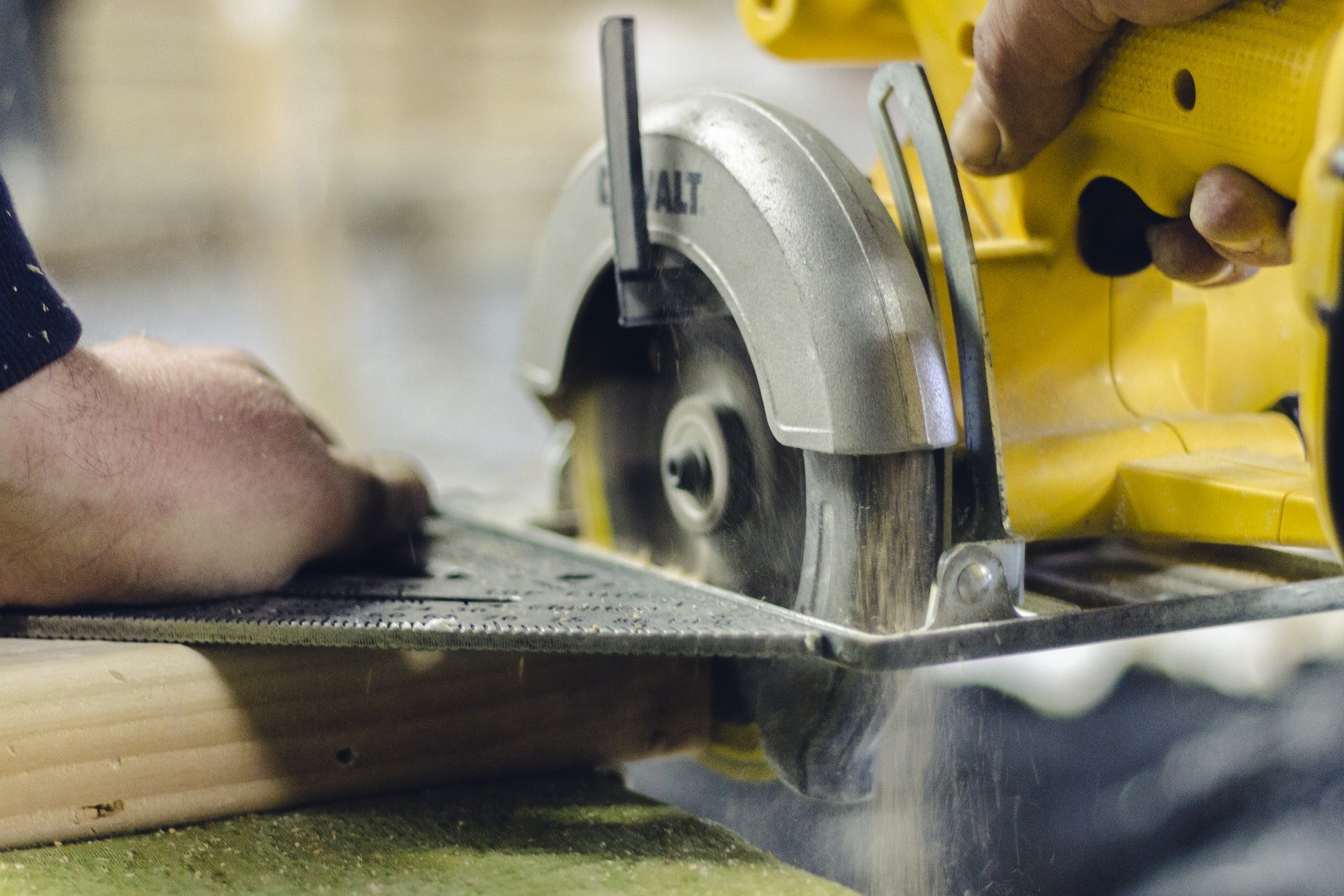As you’re willing to spend cash on a woodworking tool such as a saw for an upcoming project, there are certain things you should consider. First, you must know the differences between a table and circular saw.
Second, you need to have a plan that highlights the features you’re looking for and how much you’re willing to spend. You should also know the pros and cons of using these two types of saws. Read on to learn more about a table and circular saw.
Table of Contents
What is a Table Saw?
Also known as a sawbench, a table saw for woodworking is a tool driven by an electric motor that helps to separate pieces of wood. This tool consists of rotating saw blade that lies on an arbor.
Its blade stretches along the surface of the table to provide enough support for materials that you’re cutting. To adjust the depth of the cut, the machine operator can move the blade up and down repeatedly.
The lower the blade moves on the table, the shallower the cut becomes. Consequently, the higher the blade moves on the table, the deeper the cut becomes. In order to make the table saw safer and cut more accurately, there are many aftermarket table saw fences available, which are an excellent addition for your table saw.
Pros
- Delivers accurate and precise cuts
- Minimum chances of error
- Perfect for saving time and energy
- Saw dust goes to the dust bin compartment
- Built to last
- Easier maintenance
Cons
- Difficult to carry around when performing tasks
- Small range of use
- Can be noisy at times
- Requires a dedicated room or space
- Expensive to purchase
What is a Circular Saw?
Unlike the table saw which operates while mounted on a table, the circular saw doesn’t require any surface to support it. This woodworking tool cuts different types of material using an abrasive disc or blade.
The blade usually rotates in a circular motion around the arbor when cutting the materials. Things you can use the circular saw to cut include metal, plastic, masonry materials and wood.
You can mount it to a machine or operate it as a hand-held tool when working with it. A cordless circular saw may have an electric motor, hydraulic motor or a gasoline engine.
Pros
- Can perform a variety of tasks
- Easy to carry around when performing tasks
- Ideal for both indoor and outdoor activities
- Simple to use
- Gives you the control you need when cutting different materials
Cons
- Lacks the reliability and precision needed for performing tasks
- High chances of error when cutting materials
- Doesn’t have a dust bin compartment
- Isn’t ideal for long-term use
- Difficult to maintain
Main Differences Between a Table and Circular Saw
It is important to note that both the table and circular saws have their own intended applications. This means that their features allow them to be efficient in performing certain types of tasks.
If you want a woodworking tool with a wide range of use, don’t hesitate to choose the circular saw. Unlike the table saw, it is versatile and flexible for cutting wood, plastic or metallic materials.
Its downside is that it doesn’t have the reliability and precision required to cut these materials well. If you want to get accurate and precise cuts, then work with the table saw since it is effective for minimizing performance errors.
Saw dust disposal is another factor that helps to differentiate between a circular and table saw. You need to brace yourself for the dust that freely pours when using the circular saw.
Though it will give you a chance to cut different materials, this woodworking tool lacks a dust bin compartment. The only woodworking tool that won’t make you have saw dust on you is the table saw.
This tool comes with a dust bin compartment and is ideal for saving both time and energy used when cutting the material you’re cutting.

Circular saws are exciting to use for the first few months of purchase. With time, they tend to develop hardware failures making them less ideal for long-term use.
It is a frustrating experience to buy a woodworking tool that will break down after using it for a short while. A table saw, on the other hand, can help you cut your wood efficiently without any risks of breaking down.
This tool will stay in a perfect condition for a long time provide that you maintain it. You’ll also find it easier to perform regular maintenance on it when compared to maintaining the circular saw.
For saw users looking for a portable tool, the circular saw is a perfect choice. This tool features a lightweight design that allows its users to carry it around when performing a wide range of tasks.
The downside of using the table saw is that it is quite difficult to move this tool from one place to the other. The tool isn’t ideal for work environments that need a saw that one can easily carry around.
When it comes to using different types of machines to carry out day-to-day activities, the machine operators can either be beginners or professionals. To use the circular saw, you must have some technical knowledge on how the machine operates. This is because it features a sophisticated design. For the table saw, you’ll find it easy to cut wood pieces even if you are a beginner.
Conclusion
If you’re looking for a saw that will allow you to enjoy convenience and portability, the circular saw should be your choice. However, you’ll need to familiarize yourself with the basics of using this tool.
If your main concern is to get precise and accurate cuts when you’re using a saw, then you need to procure a table saw. This tool is ideal for beginners looking to get the most out of their wood cutting activities.
Note that you’ll need to spare some space for storing and using this tool. For those who are on a budget and want to choose between the table and circular saws, the circular saw should be their choice.
This tool is cheap to procure but has its downsides. Regardless of the saw you choose to procure, be sure to look at its advantages and disadvantages and weigh them against your expectations.

